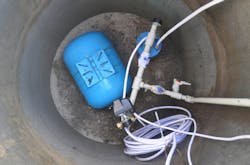BIRMINGHAM, Ala. — In the July issue of Water Technology, Editor Lori Ditoro writes about people who rely on wells for their water supplies, including drinking water. While this water also needs to be treated for contaminants, the U.S. Environmental Protection Agency (EPA) does not regulate wells like municipal public drinking water.
Marc DeBrum, assistant sales manager and applications engineer for ClearWater Tech LLC notes in the article that well owners must contend with whatever contaminants are present in the wells they drill. Because of this, water professionals should be aware of challenges that come with these water supplies.
Failed sanitary seals can lead to insect and rodent problems, adds DeBrum. Holding tanks are sensitive to mold, insects and bacteria.
A serious issue, says Phil Jones, CChm MRSC, CWS-VI, product manager for VIQUA, owners can run into is microbiological contamination, the severity of which can depend on the source of the intrusion.
Ditoro discusses several solutions water professionals can use to address the problems. Softening, oxidation/removal systems and sanitizer systems are some options. Ultraviolet or ozone disinfection may also be needed.
Testing should be a regular part of a well’s life, states Ditoro. This can help figure out what issues may exist. Other considerations include:
- What is the pattern of water use?
- Is it desired to drink well water?
- What are the visible contamination clues (lime scale buildup, orange or black staining, orange/brown "gel" build up in toilet cisterns)?
- What is the septic system’s integrity and age?
- Where is the well located with respect to the septic system and surrounding land (especially if the land is for agricultural activity)?
You can find the entire article here.
